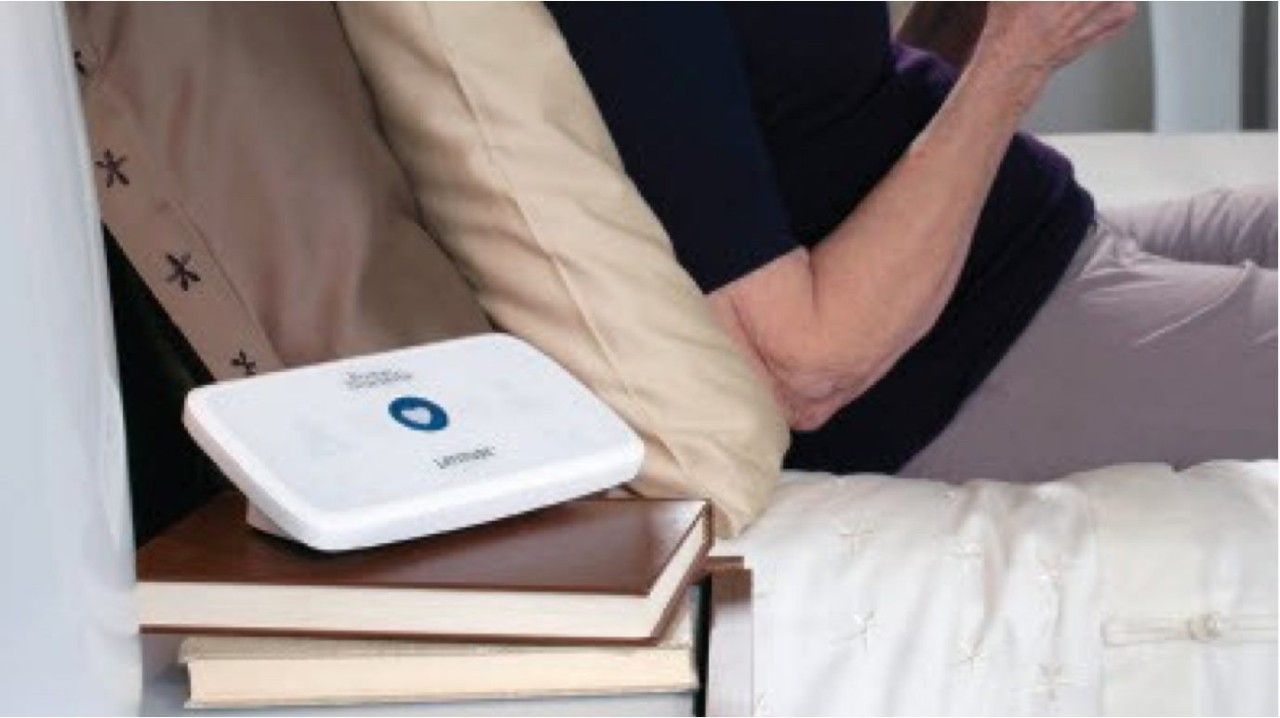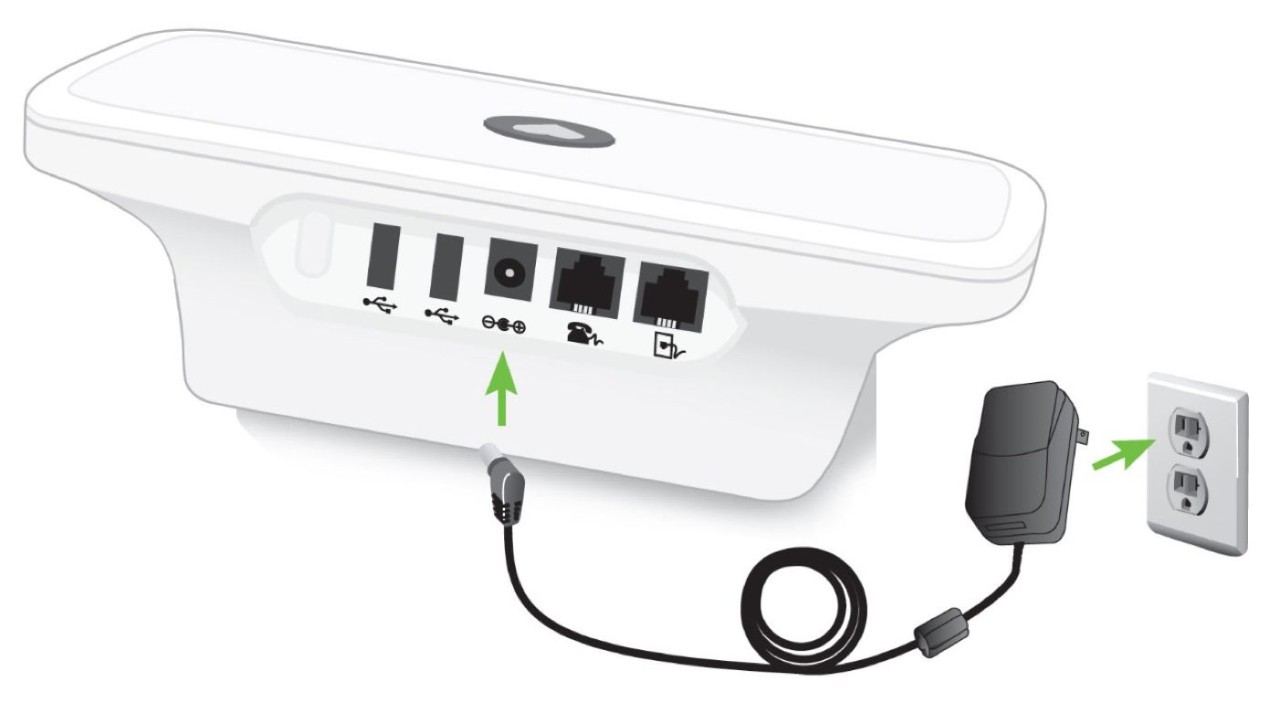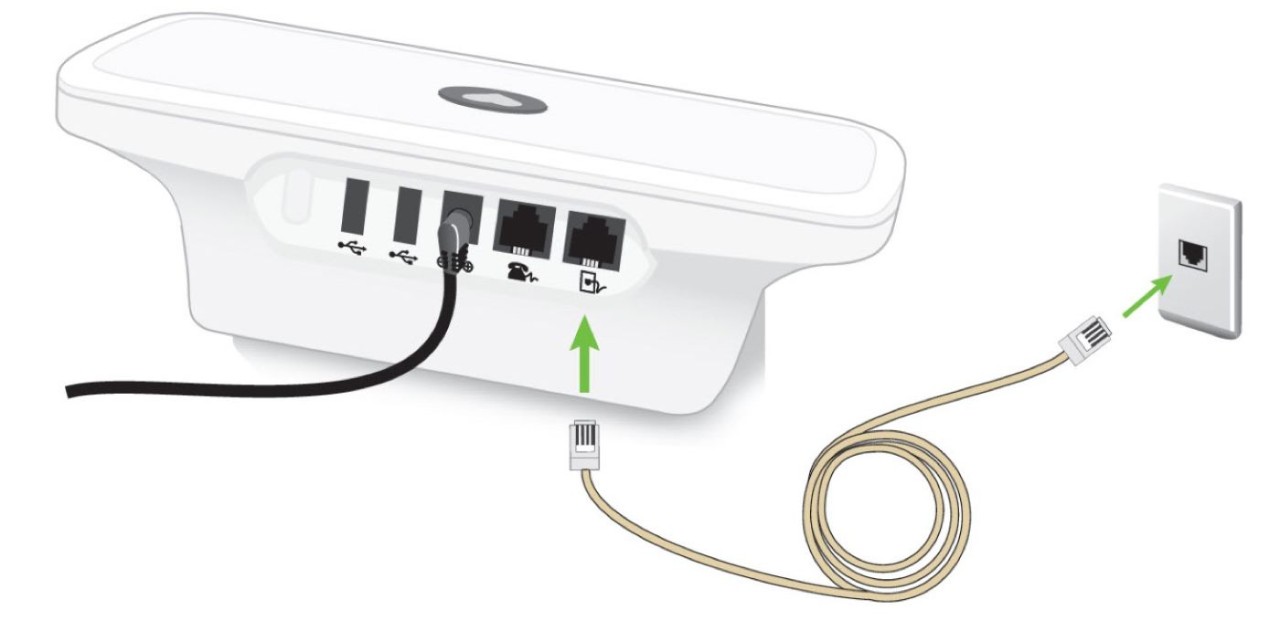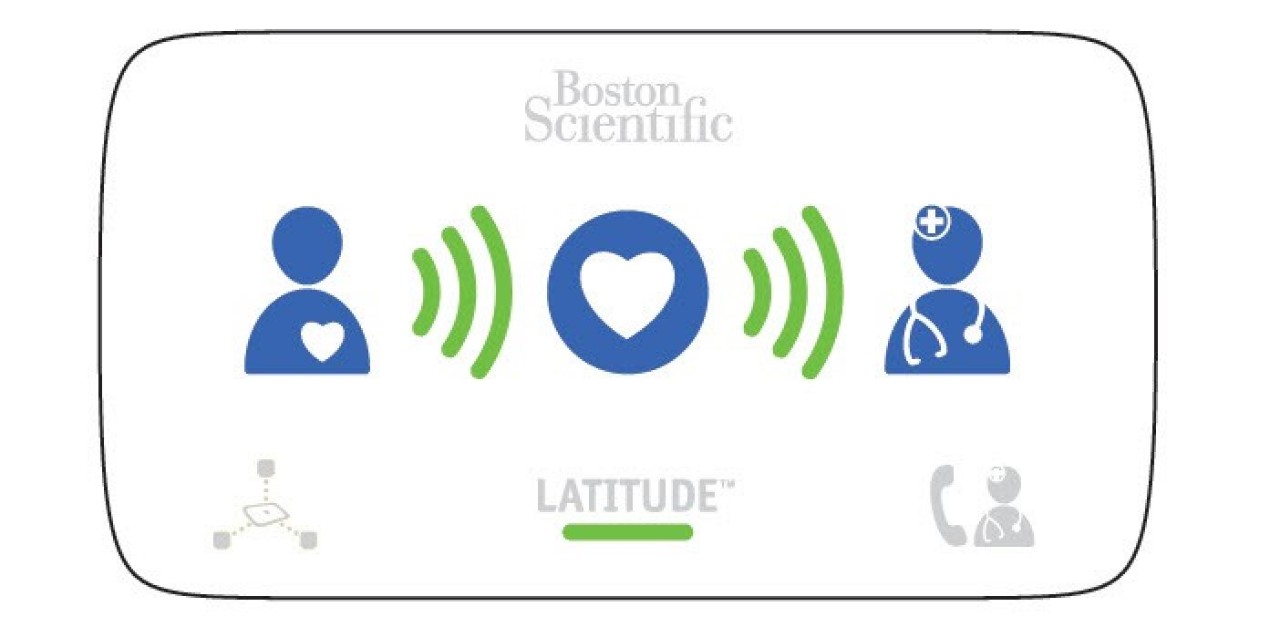
Where to place your Communicator:
- Near a telephone wall jack and electrical outlet that are easily accessible
- Within 10 feet (3 meters) from your bedside or where you sleep. If this isn’t possible, place your Communicator where you spend a considerable amount of time each day
- Where you can sit comfortably and see the front of the Communicator
- Where the Communicator and all its cables and accessories will be kept dry and not be exposed to humidity or potential water contact
Set up instructions
Be sure to stay close to the Communicator while completing the steps below to ensure the best connection between your implanted device and the Communicator.
Note: Not all Communicators have standard telephone connections. Some Communicators also do not include a telephone cord.
1. Attach the power cord
Insert the power cord (included) into the jack as shown below and plug the cord into an electrical outlet that is easily accessible.
- The LATITUDE™ indicator will flash yellow for up to one minute.
- All the Communicator indicators will light for approximately one second.
- If the LATITUDE indicator is not lit, check that both ends of the power cord are plugged in firmly. Check if the light on the power cord is lit.

2. Plug cord into the jack
Plug one end of the Communicator telephone cord into the jack as shown below and the other end of the cord into the telephone jack on the wall.
Note: If you have DSL internet service, you may need to use a DSL filter between the telephone wall jack and the Communicator. Refer to "DSL Internet Service" of the LATITUDE patient manual for more information.
Optional: To use a telephone with this wall jack, you may plug your telephone into the jack on the Communicator indicated by phone icon. Your Communicator and a telephone can share the same telephone wall jack. However, they cannot be used at the same time.

3. Press the flashing Heart button to start the setup process

4. Watch your Communicator’s wave lights
Your Communicator’s wave lights will flash green in sequence and repeat for several minutes.
Collecting data from your implanted device

Sending data

If the LATITUDE Indicator flashes yellow, a software update may be occurring. Wait several minutes for the Heart button to flash, then press it again. This may happen multiple times. Press the Heart button each time it flashes.

5. Success
If the wave lights are lit a solid green as shown below, your Communicator has successfully connected to the LATITUDE system. After two minutes, the lights will go off except for the green light under the word LATITUDE.

Troubleshooting
Refer to the LATITUDE NXT Communicator Quick Reference Guide or the troubleshooting sections of the LATITUDE Communicator Patient Manual or download the free MyLATITUDE Patient App.